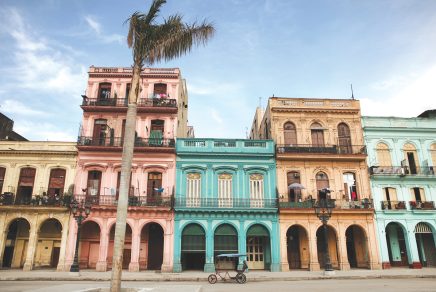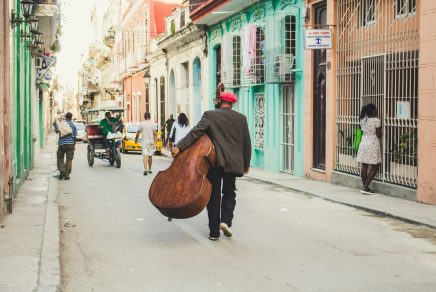Share the article
Located in the heart of Havana, the Colón Cemetery is much more than a place of eternal rest: it’s a veritable open-air museum. Spread over 56 hectares, it is home to striking funerary architecture, exceptionally fine sculptures and fascinating stories that tell the history of Cuba. This unique place, where art, history and spirituality meet, invites visitors to explore the mysteries of the past and contemplate timeless beauty. A visit to Colón Cemetery is the perfect opportunity to get off the beaten track and discover a little known but fascinating facet of Havana.
About the cemetery
Havana’s Colón Cemetery is the second-largest in the world and one of the most historically important, on par with Paris’ Père Lachaise Cemetery and Buenos Aires’ La Recoleta. Built from 1871 to 1886, it takes up 56 hectares and is the final resting place of 2 million souls, including some of Cuba’s most historically important figures. The main entrance gate is an ornate, Romanesque triple arch symbolizing the Holy Trinity. The symmetrical plan by Spanish architect Calixto de Loira is laid out along two axes suggesting a crucifix, with the most impressive monuments and mausoleums built along the main, tree-lined “roads”.
What makes this Havana cemetery one of the most important in Latin America is its funerary monuments, sculptures and mausoleums that create a sort of open-air museum. The varied architectural styles of the graves, from classical to art deco, Romanesque, eclectic or contemporary, are a feast for the eyes, and the history of Havana as told through its buried citizens is absolutely fascinating.
The cemetery is a reflection of the run-down state of a city that has suffered from a lack of supplies for the past few decades, with many tombs abandoned after the family who owned them fled at the beginning of the revolution. However, some exiled Cubans still send money home to maintain their family’s plot, which means that many graves display colourful offerings of fruits, flowers and dolls (offered to different deities). It is also a peaceful place where large trees sway gently in the breeze and offer a respite from the city’s busy street life.
La Milagrosa
There’s no doubt that the cemetery’s most famous grave (and certainly its most visited) is that of La Milagrosa (The Miraculous Lady). Amelia Goyri de Adot died in childbirth at the turn of the century, and was buried in the cemetery with her baby. Legend has it that when the grave was exhumed a few years later, La Milagrosa’s body was found intact and her baby, who had been buried at her feet, was found nestled in her arms. Her husband commissioned a statue of his beloved wife holding her child.
As the legend grew, droves of devout Catholics started lining up at the Milagrosa’s grave to pay their respects, leave offerings and hope for miracles. To this day, you will find a constant line-up of people in front of La Milagrosa’s grave. If you notice a strange ritual around this particular tomb, it’s because there is a specific way to visit La Milagrosa’s grave and ask for your wish. Approach the tomb and knock on the cement grave. Say your name and think of your wish, place your offering, then back away from the grave for as long as you can without turning your back to her.
Noteworthy Monuments
Other monuments worth a visit include Las Victimas de la Caridad, a tall Italian marble structure built in honour of the 25 firefighters who died in Havana’s great fire of 1890. It’s incredibly detailed with exquisite low relief designs, including the face of each firefighter around its base.
The art deco mausoleum of Catarina Laso is also worth a look. Catarina and her true love (not her husband) fled to France for 20 years, before returning to Cuba. When she died, her husband commissioned famous French artist Rene Lalique to design a marble domed tomb for her with a crystal rose installed at the top. Lasa was embalmed and buried, and when her husband died, he was buried standing up next to her so he could continue gazing at her for all eternity. Other than the ones cited above, there are dozens of monuments worth taking a look at, it really all depends on how much time you have.
It takes at least two hours to tour the Necrópolis. The cemetery’s entrance fee of just a few CUC (Cuban convertible pesos, at par with the US Dollar) includes an optional free guided tour, which is highly recommended. It lasts about an hour and will highlight some of the most important tombs and mausoleums in the cemetery. The guides are passionate storytellers and will regale you with stories of Havana’s glory days, as well as anecdotes about its citizens and their most intimate secrets, which they may or may not have taken to the grave.







